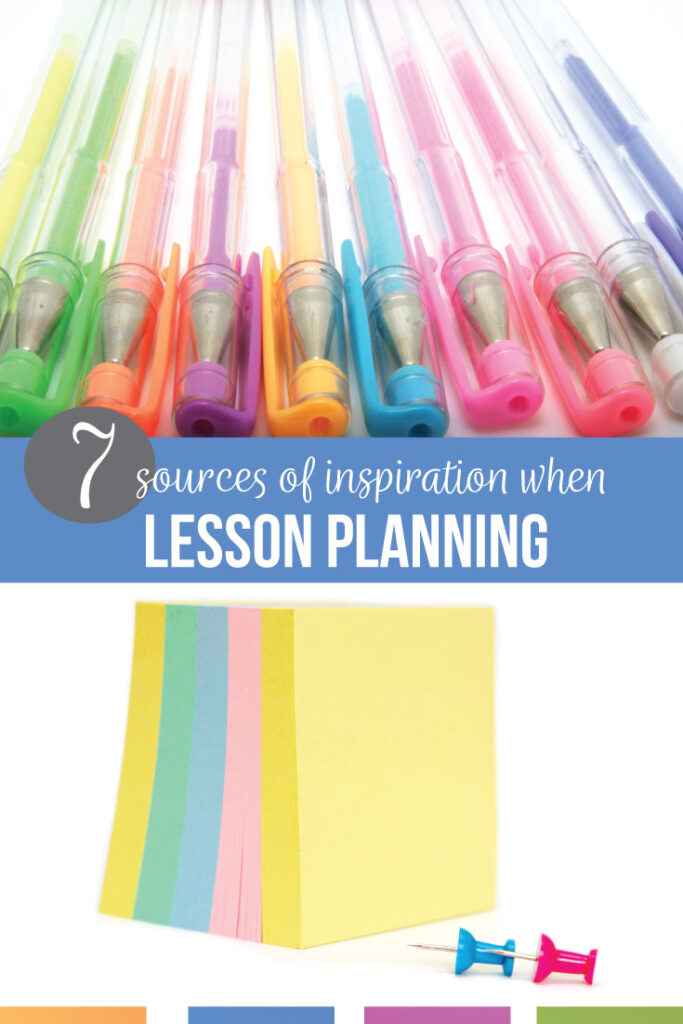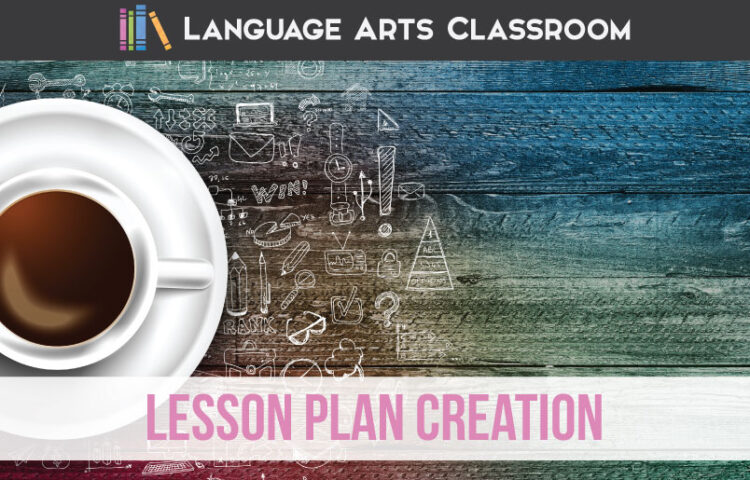All teachers need inspiration for writing the best ELA lesson plans. Sometimes, you might not feel it. Here are some inspirations for when you are stuck on creating lesson plans.
Some days (maybe many days?) you sit down with the calendar, ready to map out a week or a month or a unit (a semester?). You get a few ideas down: a web search, chapters 1-2 assigned, interactive sort, quick assessment, fun extension activities, and on.
And you stop. You really don’t want to do this. Not because you’re tired (which you are) but because the idea of writing lesson plans is overwhelming. You’re burnt, you’re frustrated with the work ethic of a class, an outside force is sending a few too many emails. Whatever the reason, you’re uninspired, but still have ELA lesson plans to write.
For all those times where a cup (or pot) of coffee is not enough to get those ELA lesson plans finished, inspiration is here.

Here are ways I change my mood to finish lesson plans.
Grab the standards.
I know. They are not high-interest reading material. Still. Since we must meet them, I make notes with them when I am creating my ELA lesson plans.
In a low-stress manner, I print them and mark them. As I read through the standards, I note where I can meet standards and my ideas for getting students there. If I have a scaffolding idea, I jot that down as well. I treat this as a bit of “free writing.” I simply write down ideas where I am inspired. Standards are typically stressful, but I treat my initial consideration of them for lesson planning as relaxed. At this point, I am brainstorming my lesson plans via the standards.
Take notes old school style on the novel or short story.
Remind yourself why you love literature. Explore the piece you are teaching from a student’s perspective. You may find a new lens to teach through or a piece that will need further explanation with your students. For me, this involves ample sticky notes that are color-coded. I don’t create more work for myself; I remind myself of why I’m teaching this particular piece.
Sure, you’re going to tie the material to standards, but why are you teaching a short story? I can reach a handful of standards with “Marigolds’ or “Blues Ain’t No Mockin Bird” that students will be intrigued by the characters and captivated by the language. Sometimes reading literature for entertainment will refresh your lesson plans.
Get out your highlighter set and a piece of nonfiction.
Mark the arguments, transitions, sources, thesis, introduction, conclusion, difficult and new words. What pieces of those can be lesson plans? Perhaps a vocabulary study, a mapping of arguments, or evaluation of emotional arguments.
Pull up your language standards. Can you meet some of those with a nonfiction lesson? You often can! Think about meeting standards “outside” of the normal labels (language with nonfiction, writing with literature).
Think of physical, tangible items to introduce to a lesson plan.
When I teach “The Glass Menagerie,” I bring out a delicate glass figurine similar to what Laura has. I allow students to hold it, to see what Laura sees. This always sparks great conversation and allows me to teach symbolism. I retrieve this figurine when I write lesson plans for “The Glass Menagerie.” Sometimes holding a real item will get you thinking process to change and to create.
You might also think of giving students hands-on opportunities for practice. I use grammar manipulatives and grammar sorts, and those small additions have increased engagement with grammar lessons.
Take a break.
Easier said than done, right? We’re not machines. When you’re tired, you don’t think as well. Go for a walk or make a healthy snack.
Teachers cannot work 100% of the time, even if we believe we can or should. You may not be able to create because you are running on empty. Simple as that.
Get some help.
What is missing from this list.. oh yes. Hop on TpT. First though—
I suggest writing out a list. Going on TpT to window shop? I’ve done it and purchased more than I needed. (I realize I’m a seller and maybe shouldn’t write that, but truly, make a list.) It is easy to get sucked into buying a lesson plans you don’t currently need. TpT will always be there. If you spot something awesome that isn’t on your focused list, add it to your wish list.
If you’re feeling overwhelmed with writing lesson plans, buying too much will make the situation worse.
Find a few lesson plans that match your criteria, look at the sellers’ free downloads to assess if you like their styles, and buy some. You are a professional; your time is worth money. You may save yourself money by buying polished products.
Set a timer.
I suggest 30 minutes. I did an hour once and got too involved in another project. Set your timer, and plow ahead with your lesson plans. See what happens. Even if you feel like you will circle and adjust dates later, keep writing and planning.
Check out a Facebook group.
You can ask questions in Facebook groups, but you can also use the search feature. You will find other ideas and plans from teachers who teach similar classes as you.
Or! Pinterest. Hop on a teacher’s forum. Google images of what you are teaching. When the timer goes off. . . head back to lesson planning.
I did this the other day. I am working on an Animal Farm unit. I went to my favorite stock image site and searched for farm animals. I can’t explain why, but this inspired me. Looking at the details of pig faces, the innocence of sheep—I wanted to outline and create. Then I found a pretty horse with a white mane. Mollie!
It may seem silly, but it helped.
Hopefully one of these ideas will resonate and dig you out of your ELA lesson plans rut. Without organization, a teacher won’t be on track to meet a district’s goals or personal objectives. Sometimes though… all of ‘it’ gets to teachers. A little perspective, a little inspiration is needed. I hope this helps.
Do you have any tips to add? How do you find inspiration when creating lesson plans?


